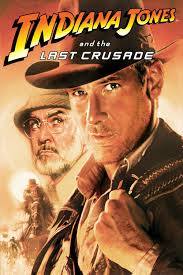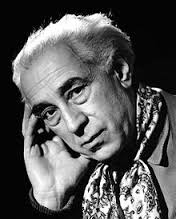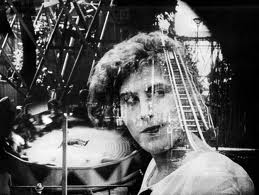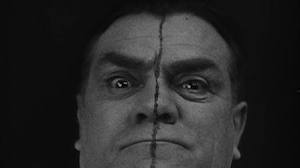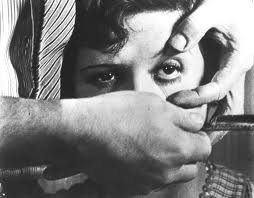After the Russian Revolution in October 1917, the New Soviet government faced a difficult task of handling different sectors of life and like other industries; the film industry took several years to rebuild outputs both in production and distribution that could help serve the aims of the new government.
During World War I, there were a number of private production companies operating in Moscow and Petersburg and since imports were cut off, these companies did well in making films catering the domestic market. These film companies resisted on following the new policy made after the Revolution to nationalize all private properties. And in July 1918, when the government’s film subsection of the State Commission of Education put strict controls on the existing supplies of raw film stock, the largest firms fled to other countries, taking all the equipment they could.
 Having to face equipment shortages and living in difficult conditions, a bunch of young filmmakers made moves that soon result to a national cinema movement. Dziga Vertov began working on documentaries of the war and soon handled new reels at the age of 20. Lev Kuleshov, who was teaching in the newly founded State School on Cinema Art, did a series of experiments by editing together different footage from different sources into a whole to create an impression of continuity.
Having to face equipment shortages and living in difficult conditions, a bunch of young filmmakers made moves that soon result to a national cinema movement. Dziga Vertov began working on documentaries of the war and soon handled new reels at the age of 20. Lev Kuleshov, who was teaching in the newly founded State School on Cinema Art, did a series of experiments by editing together different footage from different sources into a whole to create an impression of continuity.
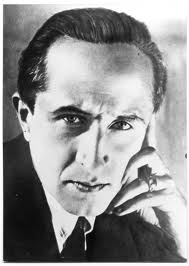 Kuleshov was the most conservative among the young Soviet filmmakers since he was trying to systematize principles of editing similar to the continuity practices in classical Hollywood. Thus, even before they were able to make films, Kuleshov and his young pupils were working at the world’s first film school and writing theoretical essays on the new art form. This grounding in theory would be the basis of the Montage style.
Kuleshov was the most conservative among the young Soviet filmmakers since he was trying to systematize principles of editing similar to the continuity practices in classical Hollywood. Thus, even before they were able to make films, Kuleshov and his young pupils were working at the world’s first film school and writing theoretical essays on the new art form. This grounding in theory would be the basis of the Montage style.
 In 1920, Sergei Eisenstein worked briefly in a train carrying propaganda to the troops in the Civil War and returned the same year to Moscow to stage plays in a worker’s theatre. In May 1920, Vsevolod Pudovkin made his acting debut in a play presented by Kuleshov’s State Film School. American films, particularly those of D. W. Griffith, Douglas Fairbanks, and Mary Pickford, were a tremendous influence on the filmmakers of the emerging Soviet movement.
In 1920, Sergei Eisenstein worked briefly in a train carrying propaganda to the troops in the Civil War and returned the same year to Moscow to stage plays in a worker’s theatre. In May 1920, Vsevolod Pudovkin made his acting debut in a play presented by Kuleshov’s State Film School. American films, particularly those of D. W. Griffith, Douglas Fairbanks, and Mary Pickford, were a tremendous influence on the filmmakers of the emerging Soviet movement.
None of the important filmmakers of the Montage style was a veteran of the pre-Revolutionary industry. All came from other fields and discovered cinema in the midst of the Revolution’s ferment.
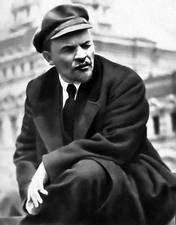 In 1921, as the country faces tremendous problems, Lenin instituted the New Economic Policy (NEP), which for several years permitted private management of business. For film, the NEP meant a sudden reappearance of film stock and equipment belonging to the producers who had not emigrated. And slowly, Soviet production began to grow as private firms made more films.
In 1921, as the country faces tremendous problems, Lenin instituted the New Economic Policy (NEP), which for several years permitted private management of business. For film, the NEP meant a sudden reappearance of film stock and equipment belonging to the producers who had not emigrated. And slowly, Soviet production began to grow as private firms made more films.
Since Lenin saw film as a powerful tool for education, the first films encouraged by the government were documentaries and newsreels such as Vertov’s newsreel series Kino-Pravda, which began in May 1922.
The Soviet Montage style displayed tentative beginnings in 1924, with Kuleshov’s class from the State Film School presenting The Extraordinary Adventures of Mr. West in the Land of the Bolsheviks. In the next few years, Eisenstein, Pudovkin, Vertov, and the Ukrainian Alexander Dovzhenko created a series of films that are classics of the Montage style.
In their writings and films, these directors championed the powers of editing. Inspired by films from Hollywood and the French Impressionists who told stories from fast cutting, the young Soviet directors declared that a film’s power comes from a combination of shots through montage.
However, not all theorists agreed on what the montage approach to editing should be. But, their approach to narrative form set them apart from other cinemas of other countries. Soviet narrative films tend to downplay character psychology as a cause; instead, social forces provided the major causes which made characters interesting for the way these social causes affected their lives. As a result, Soviet Montage movement films did not always have a single protagonist. Soviet filmmakers often avoided well-known actors, and would cast part by searching out non-actors. This practice was called typage.
The decline of the Soviet movement was not caused primarily by industrial and economic factors. Instead, the government strongly discouraged the use of the Montage Style. By the late 1920s, Vertov, Eisenstein and Dovzhenko were being criticized for their excessive formal and esoteric approaches.
Eisenstein still continued his work on Montage but occasionally incurred the wrath of the authorities up until his death in 1948. As a movement, the Soviet Montage style can be said to have ended by l933, with the release of such films as Vertov’s Enthusiasm (1931) and Pudovkin’s Deserter ( 1933).
(Notes from the book Film Art by Bordwell and Thompson)





